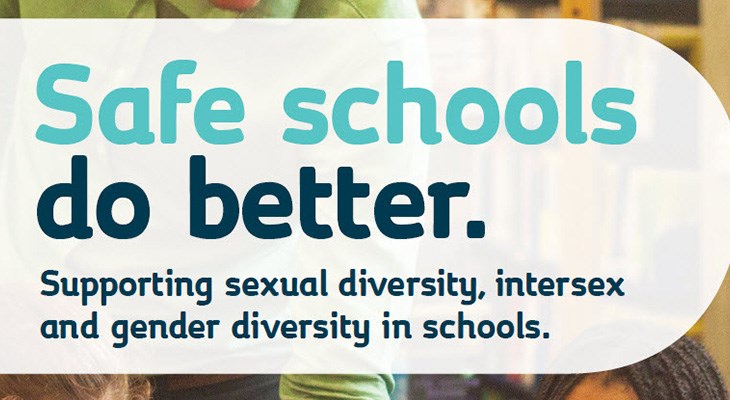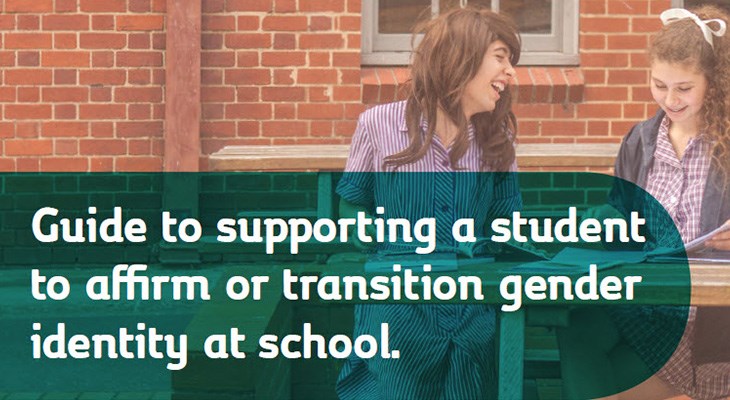

We have printed a collection of articles to support your understanding of the issues surrounding supporting Trans, Gender Diverse and Non-binary students in a school environment. You can find 2 copies of the full collection in the Staff Resource Collection in the Senior School Lounge, plus a shorter pack with the articles explored during our Staff Day Diversity session. These are available to borrow: please complete a pink slip to notify us.
The articles in these packs are also available online: please explore the links below.






Here are some useful definitions of key terms to assist you in your understanding:
| Lesbian | A woman who is romantically and/or sexually attracted to other women. |
| Gay | A person who is romantically and/or sexually attracted to people of the same sex and/or gender as themselves. This term is often used to describe men who are attracted to other men, but some women and gender diverse people may describe themselves as gay. |
| Bisexual | A person who is romantically and/or sexually attracted to people of their own gender and other genders. |
| Transgender | A person whose gender does not exclusively align with their sex assignment at birth. |
| Gender diversity | Gender diversity refers to a range of gender expressions and identities. This term includes those who may identify as transgender, gender diverse, gender-fluid, or who otherwise feel that their gender identity does not align with the sex assigned to them at birth and/or society’s expectations of gender. |
| Intersex |
Intersex means the status of having physical, hormonal or genetic features that are:
Being intersex is about biological variations, not about a person’s gender identity. People with intersex variations share the same range of sexual orientation and gender identities as people with no intersex variations. |
| Queer | An umbrella term for diverse genders and sexualities. |
| Questioning | A person who is still exploring or questioning their gender identity or sexual orientation, or doesn't want to be locked into a label. |
| Gender identity | Gender identity is defined in legislation as meaning the gender-related identity, appearance, mannerisms or other gender-related characteristics of a person (whether by way of medical intervention or not) with or without regard to the person’s assigned sex at birth. |
| Gender transition/affirmation | Gender transition/affirmation refers to the process whereby a transgender or gender diverse person socially and/or medically affirms their gender identity. There is no single moment of gender affirmation; it is an ongoing and individual process which may or may not involve medical support. |
| Sexual diversity | Sexual diversity refers to a diverse range of different sexualities, identities, and romantic or sexual attractions. This term includes those who may identify as same sex attracted, lesbian, gay, bisexual, queer and questioning or who may use other terms. |
| Sexual orientation |
Sexual orientation is defined in legislation as meaning a person’s sexual orientation towards:
|
Definitions provided by the Victorian Department of Education LGBTIQ Student Support guide.

Located in the Nora Collisson Centre Non-Fiction collection (Society & Environment: Issues). Also available as an ebook via Ebsco: click the title above to view the catalogue records, then click 'View ebook' to view while onsite.
To view digital resources while off-campus, please refer to our Remote Learning Guide for Staff.